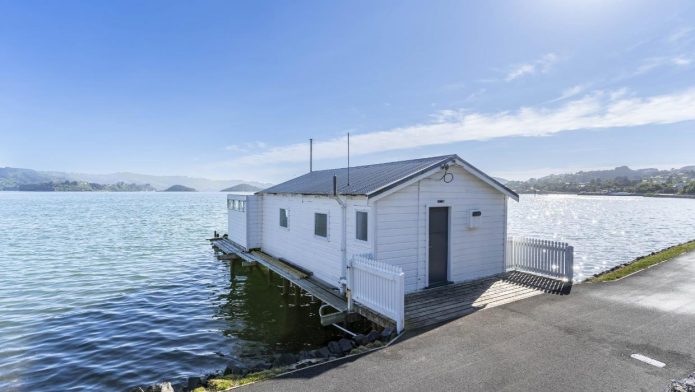PHOTO: Martinborough. VIATOR
The property market slump across New Zealand has seen some areas experience particularly steep declines in value, with price drops driven by economic adjustments post-COVID and regional demand changes. Here’s a detailed look at five of the areas hardest hit since their peak:
1. South Wairarapa District (-32%)
- South Wairarapa, encompassing towns like Martinborough, Greytown, and Featherston, saw property prices peak in December 2021, followed by a near 32% drop. Martinborough, with a median value of $877,400, faced the largest decline at 5%. Neighboring Masterton, however, showed modest growth in areas like Solway and Lansdowne.
2. Lower Hutt City (-29%)
- Lower Hutt experienced a 29% decrease in property values since its peak in late 2021. While affluent areas such as Woburn still hold high values near $1.15 million, neighboring Waterloo saw a slight increase of 2.7% to $841,050. Naenae remains the most affordable suburb with properties averaging $609,800.
3. Kawerau District (-29%)
- With a median value around $399,550, Kawerau properties dropped by 28.51% since their April 2022 peak. Despite this decline, Kawerau remains Bay of Plenty’s most affordable area, while pricier suburbs like Mt Maunganui reach over $1.3 million.
4. Ruapehu District (-25%)
- Since its peak, Ruapehu properties have seen a 25% decrease. Ohakune, the area’s most valuable town, has a median property value of $455,550, though this reflects a 3.8% decline over the past year. Manunui offers the lowest prices in the district, with median values at $318,600.
5. Wellington City (-25%)
- Wellington City’s property prices fell nearly 25% from their October 2021 peak. While Seatoun remains the city’s priciest suburb with values near $1.7 million, Wellington Central saw a 3.2% increase over the last year to $475,750, making it the city’s most affordable suburb. Rongotai faced the largest annual decrease, with median values falling by 11% to $844,900.
Market Outlook and Regional Factors
These declines reflect broader economic conditions, with rising interest rates and shifts in regional demand as contributing factors. Some areas are beginning to stabilize, as seen in modest gains in Masterton and Waterloo. As the market adjusts, affordability could see first-home buyers re-enter, and interest may grow in less expensive areas like Kawerau and Ruapehu. However, the slow recovery in city centers like Wellington may suggest lingering economic uncertainty affecting the real estate market.










